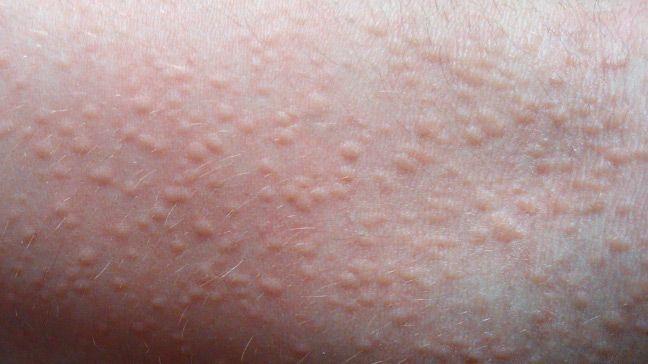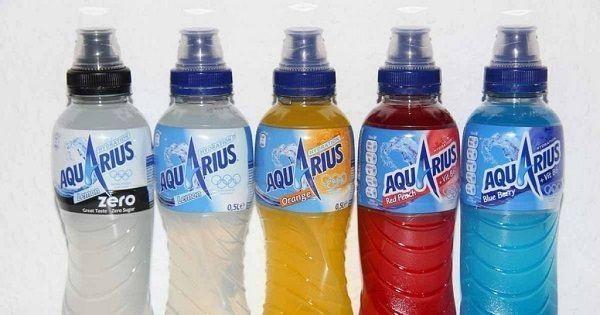HOT WEATHER - Stay safe in the sun
Stay Safe in the Sun, your guide to staying healthy and happy in the heat. Heat is the number one weather-related killer. When the body heats too quickly to cool itself safely, or when you lose too much fluid or salt thorough dehydration or sweating, your body temperature rises and heat related illnesses may develop.
Check the Benidorm Weather Forecast HERE
Don´t let these spoil your holiday.
Who is most at risk from hot weather?
While most people find extremely hot weather and heatwaves uncomfortable, some people have a higher risk than others of becoming ill. These include:
Elderly people aged over 75 years
Babies and young children
People with long term health conditions, for example heart or respiratory disease, diabetes or circulatory diseases
People who are obese
People taking certain medicines
People who work outdoors or in hot and poorly ventilated areas
People engaging in vigorous physical activity in hot weather
People who are not acclimatised to the heat, for example overseas visitors.
It’s important to keep drinking water even if you don’t feel thirsty.
Stay Safe in the Sun
Tips to help you stay well during hot weather
Drink plenty of water
One of the best ways to avoid heat-related illness is to drink plenty of water. It’s important to keep drinking water even if you don’t feel thirsty because this can prevent you from becoming dehydrated. Avoid alcoholic, hot or sugary drinks (including tea and coffee) because these can make dehydration worse.
Keep your body cool
Keeping as cool as possible can also help you prevent heat-related illness. Make sure you stay out of the sun especially between the hours of midday and 16.00 when the sun is at its strongest here in Spain. Drinking cold drinks and eating smaller, cold meals, such as salads and fruit, can also help you to keep cool. Other things to do include wearing light-coloured and loose-fitting clothes made from natural fibres such as cotton, and taking cool showers or baths.
Keep your room cool
You can help keep your house/rooms cool by shutting curtains and blinds during the day. If using air-conditioning the recommended setting is 21ºc.
Have a plan
Keep an eye on the weather forecast and know who to call if you need help. Ask your doctor before travelling if you have any health conditions that mean you are at greater risk of heat-related illness, and what you need to do about them to keep well in the heat, and how to store any medication you may be on. If you are unwell, contact your doctor or go to the nearest hospital emergency/clinic. If you think your symptoms are serious, call for an ambulance immediately on 112. See the sections below for when you may need to seek medical help.
Stay safe in the sun
If you need to go out in the sun, it's important to protect your own and your children's skin. If you avoid sunburn, you reduce the risk of skin cancer, which is one of the most common cancer.
Stay Safe in the Sun
Sunburn prevention
Here are some tips about using sunscreen and other ways you can stay safe in the sun.
What sun protection factor (SPF) should I use?
To protect against sunburn, you should apply a sunscreen with a sun protection factor (SPF) of 30+ or more. Children and people who are prone to sunburn should use a higher SPF. You should use a broad-spectrum, water-resistant sunscreen. Apply to clean, dry skin at least 20 minutes before you go outside, and then reapply every two hours.
Make sure your sunscreen has not passed its expiry date and hasn’t been stored in direct sunlight or hot temperatures such as in a hot car or by the pool. This is because sunscreen can deteriorate and not be as effective in these circumstances.
What does broad spectrum mean?
There are three types of ultraviolet (UV) radiation: UVA, UVB and UVC. Broad spectrum products provide protection against the sun’s UVA and UVB rays. UVC is blocked by the ozone layer. The SPF is a measurement of the amount of UVB protection, and if a sunscreen is labelled ‘broad spectrum’ it also offers UVA protection. It is important to note that some sunscreens are SPF50+ but are not broad spectrum. Look for ’broad spectrum’ on the product’s label.
How much sunscreen should I put on?
An average-size adult should use about one teaspoon of product on each arm and leg, on their back and on their torso. Half a teaspoon should be applied to the face and neck – including the ears and the back of the neck. Children need about half of this amount. Reapply sunscreen regularly.
Should I reapply sunscreen if I go swimming?
Water washes sunscreen off and the cooling effect of the water can make you think you're not getting burnt. Water also reflects UV rays, increasing your exposure. Even sunscreens labelled ‘water-resistant’ should be reapplied every two hours after going into the water. All sunscreens will rub off through toweling and perspiration as well, so it's important to reapply it every two hours anyway.
Stay Safe in the Sun
Is sunscreen the only sun protection I need?
Sunscreen should not be used to increase the amount of time you spend in the sun, and should be used in conjunction with other sun protection measures.
The best way to protect yourself is to: slip on some sun-protective clothing that covers as much skin as possible. Slop on broad-spectrum, water-resistant SPF30+ sunscreen. Slap on a hat which is broad-brimmed to protect your face, head, neck and ears. Seek some shade. Slide on some sunglasses, making sure they meet European Standards
What heat-related illnesses should I look out for?
Sun Burn - Treatments to soothe sunburn.
1. Fill a spray bottle with an even mixture of apple cider vinegar and water to instantly relieve the pain.
2. Apply cold yogurt on your burn for 10 minutes to help your sunburned skin heal. Pick up a cold plain yogurt, which contains a lot of probiotics that will help restore your skin's natural barrier, and spread a thin layer over your sunburn. Let the yogurt sit for about 10 minutes, and then gently dab it off with a cold rag.
3. Sprinkle corn starch on yourself or your sheets to ease the pain while sleeping.
4. Take an oatmeal bath to soothe itchy skin.
Grind a cup of old-fashioned oatmeal in the blender or food processor and pour the oatmeal grinds in a bath full of warm water before getting in. The oatmeal will help calm any inflammation and soothe itchy skin.
5. Spread a thin layer of raw honey on the affected area to help reduce infection.
Raw honey, a natural antiseptic, can help heal damaged skin. Carefully spread it on the area, cover it with gauze, and let it sit.
6. Lather your skin with a milk-based lotion on your sunburn to keep your skin moisturised.
7. Wear loose clothing while your skin is healing.
8. One of the best remedies for a sunburn is to lather your skin with aloe vera gel, and a way to make it feel even better is to chill it beforehand to instantly ease some of the painful heat.
9. Soak a small washcloth in a pot of cooled black tea and dab it on your sunburn to relieve some of the sting.
10. Crush aspirin into a powder and add a bit of water to create an anti-inflammatory paste. Crush a few aspirin tablets, which will help reduce inflammation, and add the powder to a bit of water to create a paste-like texture. Spread the mixture on top of your burn, and gently rinse it off after a few minutes.
11. Lay a baby wipe on top of your sunburn to temporarily cool the area.
12. Drink lots of water and take ibuprofen as soon as you realize you have a sunburn to reduce the pain and swelling.
13. Add a bit of baking soda to lukewarm bathwater to soothe uncomfortable skin.
14. Apply menthol shaving cream to the burnt areas, leave on for about 30 minutes.
Heat rash

This is an itchy, painful rash commonly called prickly heat. It is caused by excessive sweating during hot, humid weather, and particularly affects young children.
Symptoms: A cluster of red pimples or small blisters, particularly on the neck or upper chest, or in creases in the groin, elbow and under the breasts.
What to do: Move to a cooler, less humid environment. Keep the affected areas dry (powder can help), and avoid using ointments or creams because they keep the skin warm and moist which can make the condition worse. Using Dettol soap can help avoid prickly heat.
Stay Safe in the Sun
Dehydration
This occurs when the body doesn't have enough water and other fluids to carry out its normal functions.
Symptoms: Dizziness, tiredness, irritability, thirst, dark yellow urine, loss of appetite, fainting.
What to do: Drink plenty of water or diluted fruit juice or Aquarius (pictured below) and avoid tea, coffee and alcohol. Move to somewhere cool (preferably air-conditioned), and if possible use a spray bottle filled with water to cool you down. If you start to feel unwell, call the emergency department on 112

Heat cramps
These usually affect people who sweat a lot during strenuous activity, causing the body to lose salt and water. This can lead to heat cramps.
Symptoms: Muscle pains or spasms. Heat cramps can also be an early symptom of heat exhaustion.
What to do: Stop all activity and lie in a cool place (preferably air-conditioned) with your legs raised slightly. Drink water or diluted fruit juice, or Aquarius (pictured above), which will help replace lost salts and minerals, have a cool shower or bath, massage your limbs to ease the spasms and apply cool packs. Do not go back to strenuous activity until a few hours after the cramps have subsided. If they continue for more than one hour seek medical attention.
Heat exhaustion
This is the body´s reaction to losing excessive amounts of water and salt contained in sweat.
Symptoms: Heavy sweating, pale skin, fast and weak pulse rate, fast and shallow breathing, muscle weakness or cramps, tiredness and weakness, dizziness, headaches, nausea or vomiting, fainting.
What to do: Move to a cool place (preferably air-conditioned) and lie down. Remove excess clothing, take small sips of cool fluids, and have a cool shower, bath or sponge bath. Put cool packs under the armpits, on the groin or on the back of the neck to reduce body heat. If symptoms last for longer than one hour, go to the nearest hospital emergency department/clinic, or call 112 for an ambulance.
Heat stroke
This occurs when the body temperature is not controlled properly and it rises above 40.5°C. It is the most serious heat-related illness and is a life-threatening emergency. Immediate first aid aimed at lowering the body temperature as quickly as possible is very important.
Symptoms: A sudden rise in body temperature, red, hot dry skin (because sweating has stopped – though the person may still be sweaty if they have been exercising), dry, swollen tongue, rapid pulse, rapid shallow breathing, intense thirst, headache, nausea and vomiting, dizziness, confusion, poor coordination or slurred speech, aggressive or bizarre behaviour, loss of consciousness, seizures or coma.
What to do: Call 112 immediately and ask for an ambulance. While you are waiting for help, move the person to a cool, shaded area and keep them as still as possible. Remove excess clothing and give them small sips of water if they are conscious and able to drink. Bring their temperature down any way you can, for example by gently spraying them with cool water from a spray bottle soaking their clothes with cool water, or sponging their body with cool water. Place cool packs under their armpits, on the groin or on the back of their neck to reduce body heat. Do not give aspirin or paracetamol because they won’t help and may be harmful. If they are unconscious, lay the person on their side (the recovery position) and check they can breathe properly. Perform CPR if needed.
Swollen legs, fee and hands in hot weather
Having swollen Limbs is often both annoying and uncomfortable. No one wants to feel like their rings are cutting off their circulation. Swelling, also known as edema and can happen anywhere in the body. It’s commonly seen in the hands, arms, feet, ankles, and legs.
What causes the swelling? When you’re suddenly exposed to unusually hot temperatures, your body may struggle to cool itself down. Normally, your body pushes warm blood toward the surface of your skin, where it cools down by sweating. On hot and humid days, this process may not work properly. Instead, fluid might accumulate in your hands instead of evaporating through sweat.
This swelling, however natural, can be very uncomfortable or even painful. It may take your body a few days to acclimate to hot weather. Once it does, your swelling should go away.
If it doesn't go down on it's own when you're somewhere cooler, the swelling may be caused by other things, and you should seek help. But in summer, swollen fingers and ankles are an unfortunate, but pretty normal, side effect of enjoying sunny days.
Where can I get help?
If you are unwell and in the new town area of Benidorm go to the centro de salud, take with you, your passport, EHIC/GHIC card and insurance documents or call 112
While you are waiting for an ambulance try to cool yourself down. You can do this by placing ice-packs under your armpits, on your groin or on the back of the neck to reduce body heat. Take a cool shower or bath (if you feel well enough) or spray yourself with cool water from a spray bottle.





